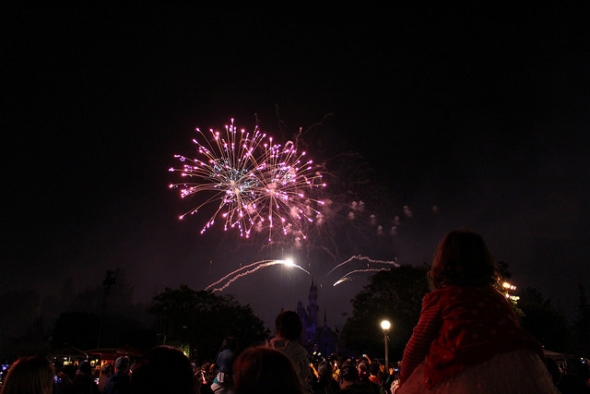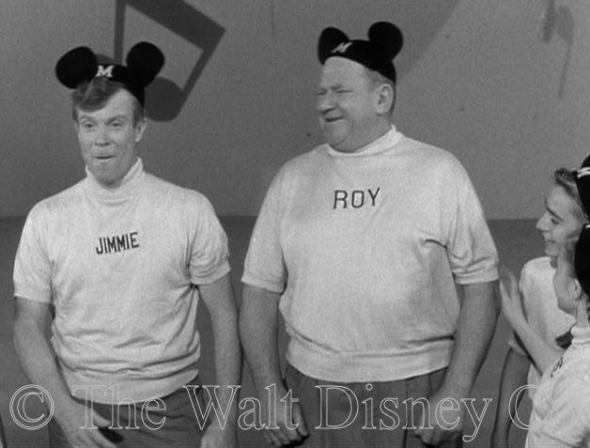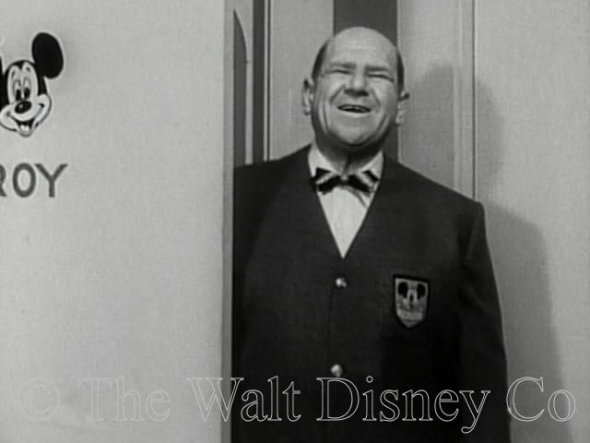Upping the ante
Image: Jeff Kern, Flickr (license)
The fireworks show was a huge success, ridiculously amateurish though it was. In time, Disney went so far as to give it a name, Fantasy in the Sky. While I dispute whether a single person launching bottle rockets into the air qualifies for such a grandiose title, the humble beginnings evolved into something spectacular over time. If you’ve been a frequent visitor at either Disneyland or Walt Disney World, you’ve likely seen some version of Fantasy in the Sky.
The presentation ran in Anaheim from 1958 to 1999 and has since returned briefly in both 2004 and 2015. At Magic Kingdom, it was part of the opening attractions in 1971, lasting until 2003. In fact, even Disneyland Paris and Tokyo Disneyland have offered their own variations of the nighttime spectacular. While other fireworks exhibitions are now synonymous with a Disney visit, Fantasy in the Sky was more than just the original. It was also the predominant option throughout the history of Disney theme parks, and the math suggests that it’ll remain that way until at least the 2040s if not permanently.
Of course, the show had to improve over time to shed its status as an unskilled production. One of the key moments in this transformation occurred when Disney deduced a way to program the fireworks. They implemented an automated system that would launch each projectile at a designated point during the proceedings. That may sound like a modest achievement today, but it was roughly the equivalent of steel roller coaster tracks at the time. The programmable sequencing fundamentally altered the type of show Disney could put on for its late-night guests. The days of one guy using his own matches to shoot fireworks into the sky for thousands of park visitors were over.
Back to the drawing board with The Big Mooseketeer
Image: Disney
The missing ingredient for Disney’s nighttime display was obvious in hindsight. Fantasy in the Sky enjoyed musical accompaniment from virtually the start. During the first few years of the performance, the five songs played during the show were Bibbidi-Bobbidi-Boo, Heigh-Ho, Mickey Mouse March, Whistle While You Work, and You Can Fly, You Can Fly, You Can Fly.
After a time, the company learned to synchronize the fireworks to music in a way that tied Fantasy in the Sky back to the classic Disney movies of old. That was the key advantage of programmable projectile launches. Not coincidentally, Disney’s strategists deduced that they could deliver a better presentation if they treated their nighttime exhibit as an animated movie. A gentleman named Roy Williams is as responsible for the timeless popularity of Fantasy in the Sky. You may know him for a different reason, though.
Williams has one of the best hiring stories in the history of Disney. On the day of his interview, the large man spoke with a much smaller fellow he incorrectly identified as an intern. The two of them engaged in small talk, and when Williams received a job offer a few days later, his new employer informed him that Walt Disney had greatly enjoyed their conversation. It’s the equivalent of trying to get a job with Paramount today, never realizing that Steven Spielberg is performing your interview.
Image: Disney
One of the things people noticed about Williams is that he had a big personality. The studio’s animators liked him so much that he earned the nickname of Moose, and if you ever watch the 1945 classic, Hockey Homicide, you’ll note a reference to him. Since Disney instantly took to Williams, he put him to work where all the nebulous employees went. He became a storyboard artist. Inarguably his most lasting assignment was to craft the storyboards for Fantasy in the Sky.
This seminal contribution to Disney folklore is not how you know him, though. One day, Walt Disney was looking at Williams and pointed out the obvious. A man nicknamed Moose is clearly funny looking; Disney was impolitic enough to add that Moose was also fat. That made the 40-something gentleman a perfect addition to…the Mickey Mouse Club.
This is the way the mind of Walt Disney worked, for better and for worse. He had a group of teen and pre-teen kids who sang and danced their way toward indoctrinating the youths of America into the Disney lifestyle. For no apparent reason, he had someone as old as three of them combined as one of the most famous characters in the show’s history. One of the signature storyboard artists for Fantasy in the Sky was also The Big Mooseketeer from the Mickey Mouse Club.
Usually clad in a shirt with Roy emblazoned on the front, Mr. Williams also wore mouse ears religiously. When he didn’t, his giant bald head gave away the incongruity of his presence on the show. Many viewers of these programs always assumed that the man called Moose was simple. In reality, his accomplishments behind the scenes at Disneyland had repercussions that ripple to today.




Comments
Thank you for this article.
Hopefully it reminds people that although Walt Disney created Disneyland for families to enjoy, he was first and foremost a businessman.
Therefore all these new upcharge events that Disney has or will introduce should really not come as a complete shock to people.
All they are doing now is employing another method to keep people on site longer than before albeit in a more upfront and some would say a greedy manner.
Great article! Very interesting read and most certainly love all the night time shows at Disney World!